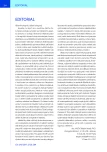THE CLINICAL VALUE OF 99MTC‑MAG3 RENAL SCINTIGRAPHY IN THE FOLLOW‑UP OF PATIENTS AFTER PYELOPLASTY FOR UNILATERAL PELVIC‑URETERIC JUNCTION OBSTRUCTION
Authors:
Jan Trachta; Marcela Pýchová; Luboš Zeman; Jan Kříž
Authors‘ workplace:
Klinika dětské chirurgie 2. LF UK a FN Motol, Praha
Published in:
Ces Urol 2017; 21(3): 217-224
Category:
Original Articles
Overview
The Aim:
To evaluate the clinical benefit of 99mTc-MAG3 study in the follow-up of children who underwent unilateral pyeloplasty and the need of 99mTc-MAG3 routine post-operative performance.
Methods:
A retrospective analysis of medical records of all patients aged 0 to 18 years who underwent unilateral pyeloplasty for pelvic-ureteric junction (PUJ) obstruction between January 2011 and January 2015 was performed. Included into the study were all patients investigated by both, 99mTc-MAG3 and ultrasound scan (USS), before and after pyeloplasty. Excluded were all patients with bilateral hydronephrosis, conjoint vesico-ureteric reflux, solitary kidney, horseshoe kidney and all lost to follow-up. We compared the anterio-posterior (AP) diameter of the renal pelvis on the last follow-up before and the last follow-up after the operation, as well as the differential renal function (DFR) on 99mTc-MAG3 scan. Any change in DRF exceeding 5 % was considered significant.
Results:
In the above mentioned period we performed 80 pyeloplasties. 48 patients were included into the analysis, aged 1.5 months to 17 years (3.6 years on average). In 42 patients we performed standard open Anderson-Hynes pyeloplasty and in 6 laparoscopic procedure (age range 3 to 15 years, 9 years on average). DRF on 99mTc-MAG3 study before the operation was under 40 % in 10 patients, ranging from 35 to 13 %, the remaining 38 patients had DRF above 40 %. 99mTc-MAG3 study performed 4 to 45 months post-operatively showed improvement of DRF in 11 patients (23 %), deterioration in 5 patients (10 %) and function with no significant change in 32 patients (66 %). In all 5 patients with DRF deterioration there was better flow with no obstruction after pyeloplasty despite a drop of supranormal function back to normal in 2 cases and further worsening in 3. 2 to 58 months post-operatively (24 months on average) there was a reduction in AP diameter 1 to 44mm (16mm on average) in all patients but one with no change. Three patients developped stricture in anastomosis with the need of reoperation in 2 cases and temporary JJ stent insertion in one case.
Conclusion:
Performimg 99mTc-MAG3 renal scans routinely after pyeloplasty for unilateral PUJ obstruction and well-functioning contralateral kidney does not bring any clinical benefit. USS is sufficient for the follow-up of these patients and 99mTc-MAG3 scan could be added only in patients with DRF under 40 % preoperatively. When interpreting DRF on 99mTc-MAG3 scans clinicians should bear on mind a possible supranormal function of a dilated kidney.
KEY WORDS:
Hydronephrosis, pyelo-ureteral junction obstruction, pyeloplasty, 99mTc-MAG3 renal scintigraphy, post-operative follow-up.
Sources
1. Tekgül S, Dogan HS, Associate EEG, et al. Guidelines on Paediatric Urology. 2015.
2. Sedláček J, Kočvara R, Langer J, et al. Výsledky léčby neonatální hydronefrózy. Čes. Slov. Pediat. 2008; 63(12): 653–659.
3. Langer J, Sedláček J. Neonatální hydronefróza, Neonatologické listy 2012; 18(1): 12–20.
4. Nguyen HT, Benson CB, Bromley B, et al. Multidisciplinary consensus on the classification of prenatal and postnatal urinary tract dilation (UTD classification system). J Pediatr Urol 2014; 10(6): 992–998.
5. Dhillon HK. Prenatally diagnosed hydronephrosis: the Great Ormond Street experience. Br J Urol. 1998; 81: 39–44
6. Ransley PG, Dhillon HK, Gordon I, et al. The postnatal management of hydronephrosis diagnosed by prenatal ultrasound. J Urol. 1990; 144: 584–587.
7. Almodhen F, Jednak R, Capolicchio JP, et al. Is routine renography required after pyeloplasty? J Urol 2010; 184(3): 1128–1133.
8. Harraz AM, Helmy T, Taha DE, et al. Changes in differential renal function after pyeloplasty in children. J Urol. 2013: 1468–1473.
9. Cost NG, Prieto JC, Wilcox DT. Screening ultrasound in follow‑up after pediatric pyeloplasty. Urology 2010; 76(1): 175–179.
10. Castagnetti M, Novara G, Beniamin F, et al. Scintigraphic renal function after unilateral pyeloplasty in children: a systematic review. BJU Int. 2008; 102(7): 862–868.
11. Inoue Y, Ohtake T, Yokoyama I, et al. Evaluation of renal function from 99mTc-99mTc‑MAG3 renography without blood sampling. J Nucl Med. 1999; 40(5): 793–798.
12. Maenhout A, Ham H, Ismaili K, Hall M, Dierckx RA. Supranormal renal function in unilateral hydronephrosis: Does it represent true hyperfunction? Pediatr Nephrol. 2005; 20(12): 1762–1765.
13. Capolicchio G, Jednak R, Dinh L, Salle JLP, Brzezinski A. Supranormal renographic differential renal function in congenital hydronephrosis: Fact, not artifact. J Urol. 1999; 161(4): 1290–1294.
14. Moon DH, Park YS, Jun N‑L, et al. Value of supranormal function and renogram patterns on 99mTc‑mercaptoacetyltriglycine scintigraphy in relation to the extent of hydronephrosis for predicting ureteropelvic
junction obstruction in the newborn. J Nucl Med. 2003; 44(5): 725–731.
15. Kříž J, Křížová H, Morávek J, Zeman L. Použití dynamické scintigrafie ledvin v hodnocení funkce kongenitální hydronefrózy u dětí. Ces Urol 2003; 7: 70.
Labels
Paediatric urologist Nephrology UrologyArticle was published in
Czech Urology

2017 Issue 3
Most read in this issue
- THE SIGNIFICANCE OF MRI IN DIAGNOSING PENILE FRACTURE IN A CASE REPORT OF A 16-YEAR-OLD BOY
- THE ROLE OF MULTIPARAMETRIC MAGNETIC RESONANCE IMAGING IN ACTIVE SURVEILLANCE OF PROSTATE CANCER
- ILICOURETERAL FISTULA AS A CAUSE OF LIFE-THREATENING HAEMATURIA
- LAPAROSCOPIC RESECTION OF STENOSIS OF URETER – VIDEO
